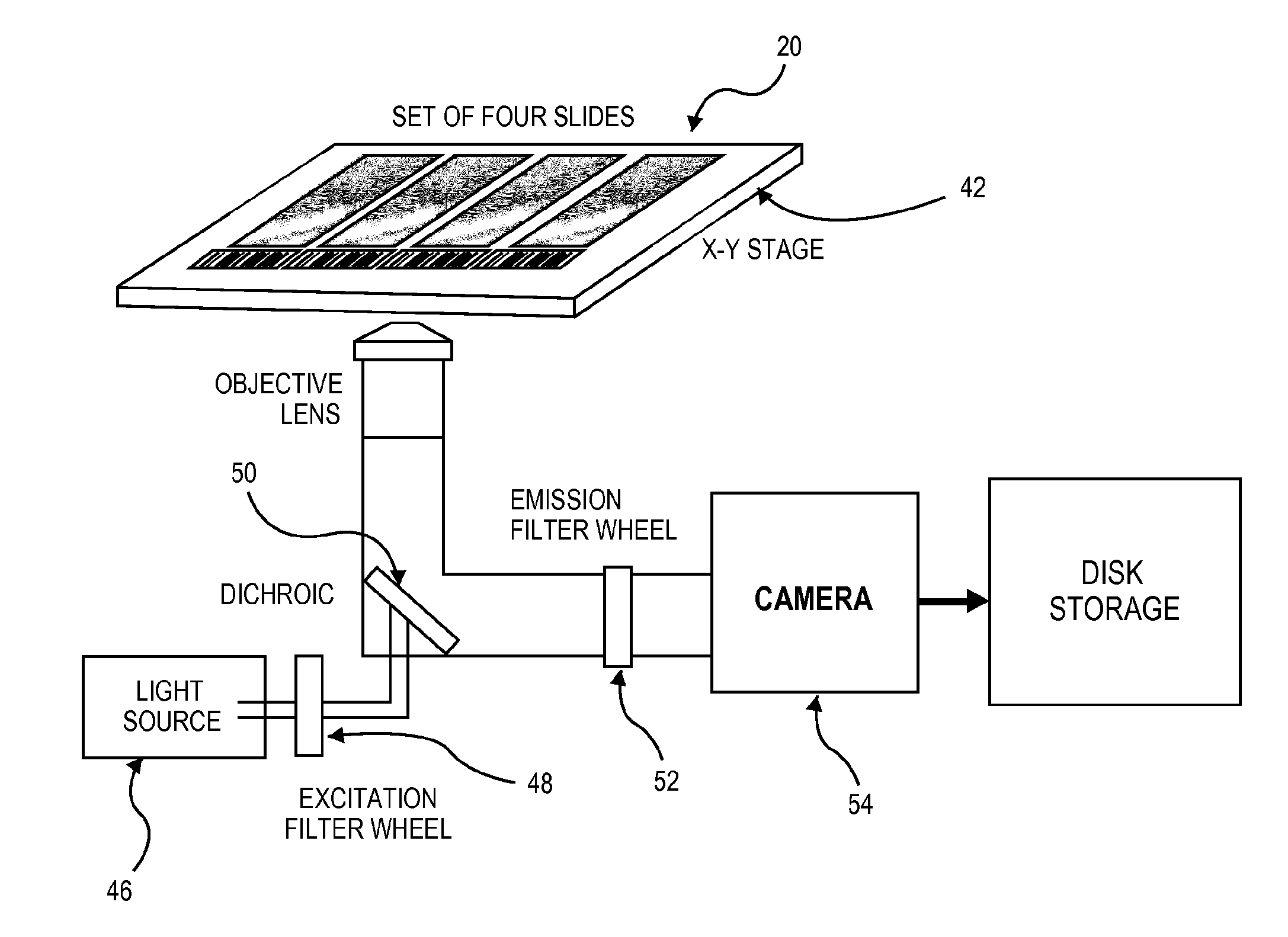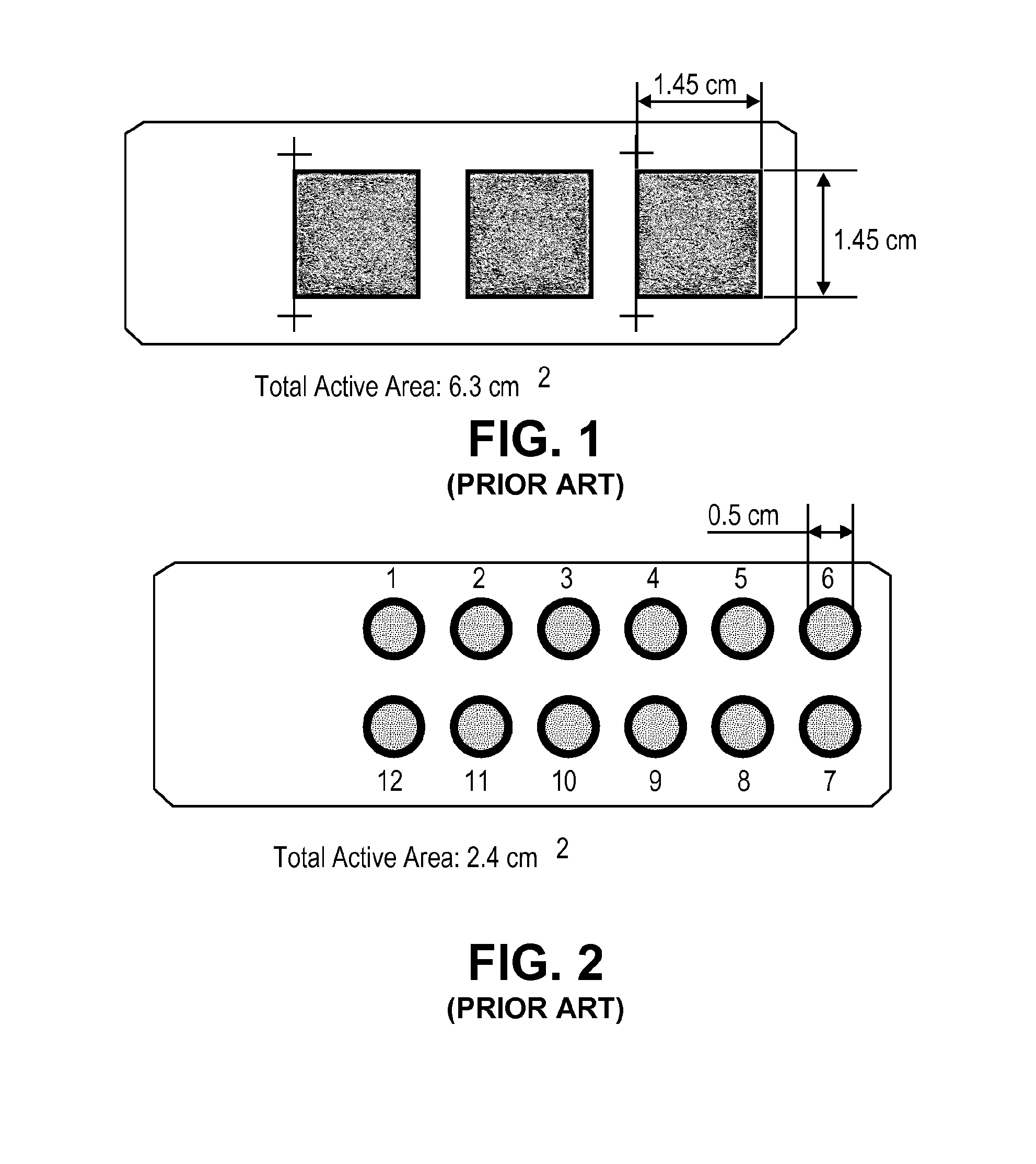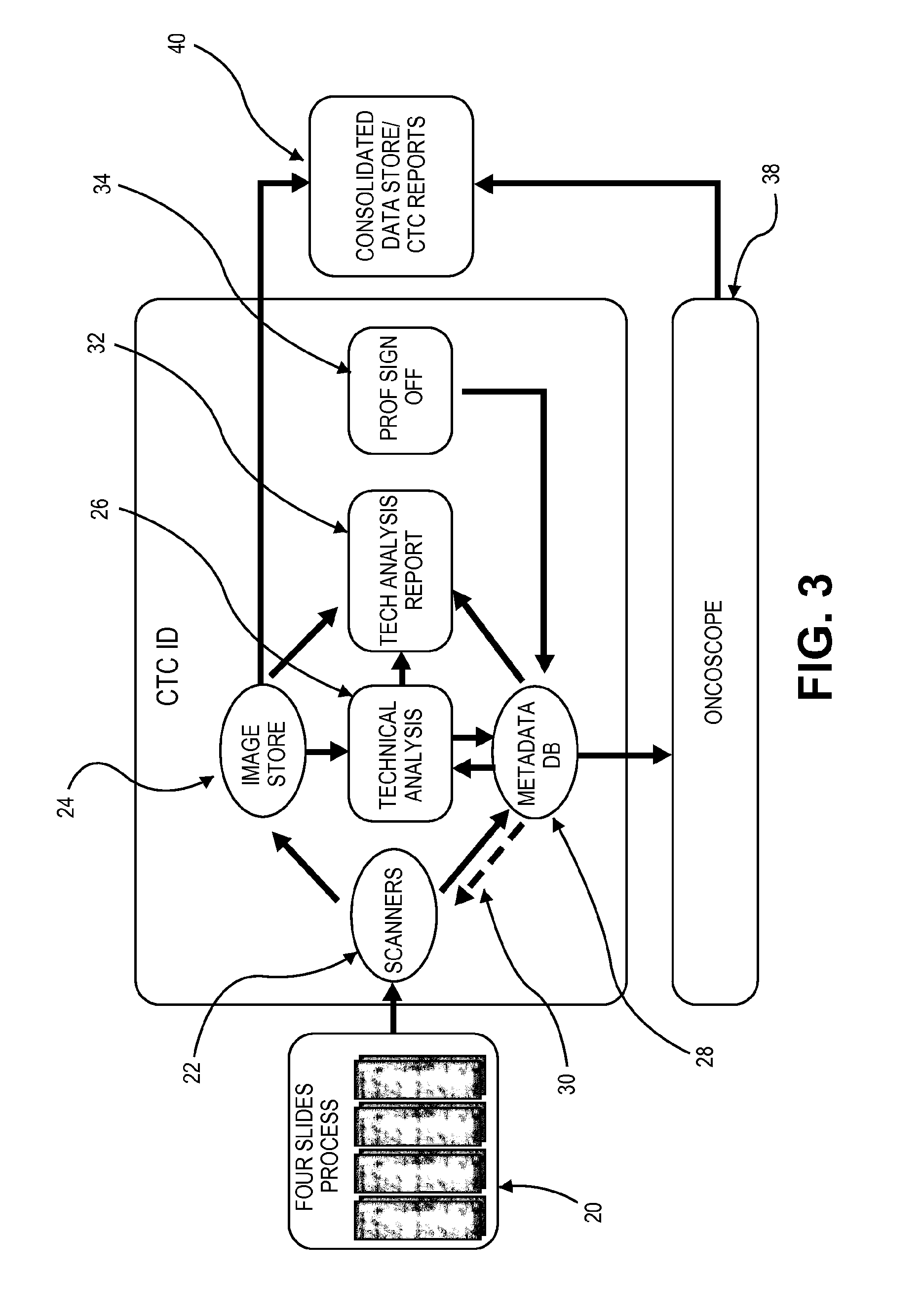Apparatus, system and method for identifying circulating tumor cells
- Summary
- Abstract
- Description
- Claims
- Application Information
AI Technical Summary
Benefits of technology
Problems solved by technology
Method used
Image
Examples
example 1
Detection and Characterization of CTCs
[0068]Experimental Results
[0069]CTC to HD-CTC: Definitional Refinements.
[0070]The system preferably defines one or more measures for the cells to be utilized in the analysis. Various approaches define an intact CTC based on the investigation of large numbers of candidate events in patients with epithelial cancers, with direct comparison to cell from the solid forms of the same tumor in the same patient [9-12]. Based on these definitions, and utilizing the HD-CTC assay to refine criteria, a definition of an HD-CTC was established. This definition has been developed to ensure that an HD-CTC is a cell that has the highest potential of being an intact cell originating from a solid deposit of carcinoma in the patient's body. All other populations that partially fulfill these requirements but fall short of the strict inclusion criteria discussed below are tracked in the analysis since many of them likely represent fragmented or apoptotic tumor cells t...
PUM
| Property | Measurement | Unit |
|---|---|---|
| Thickness | aaaaa | aaaaa |
| Length | aaaaa | aaaaa |
| Length | aaaaa | aaaaa |
Abstract
Description
Claims
Application Information
 Login to View More
Login to View More - Generate Ideas
- Intellectual Property
- Life Sciences
- Materials
- Tech Scout
- Unparalleled Data Quality
- Higher Quality Content
- 60% Fewer Hallucinations
Browse by: Latest US Patents, China's latest patents, Technical Efficacy Thesaurus, Application Domain, Technology Topic, Popular Technical Reports.
© 2025 PatSnap. All rights reserved.Legal|Privacy policy|Modern Slavery Act Transparency Statement|Sitemap|About US| Contact US: help@patsnap.com



